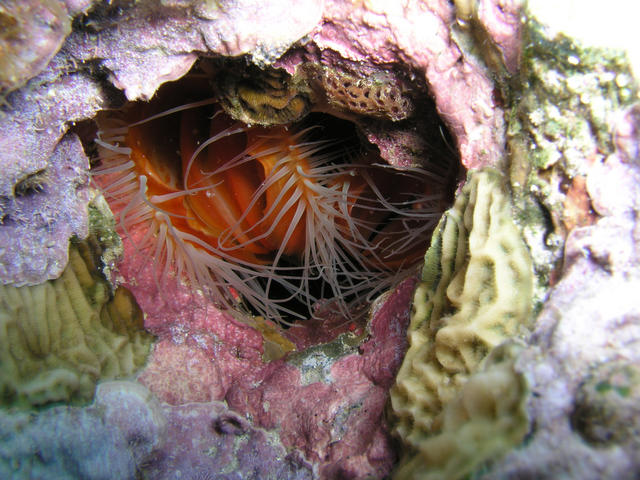plr0
Registered
Can someone identify this creature for me? The picture was taking in BVI on the Rhone.


Welcome to ScubaBoard, the world's largest scuba diving community. Registration is not required to read the forums, but we encourage you to join. Joining has its benefits and enables you to participate in the discussions.
Benefits of registering include

See what I saidarchman:Clams tend to follow veneroid body plans and possess isomyarian (same-sized) adductor muscles. Scallops prefer the pteriomorph plan with unequal (anisomyarian) or single (monomyarian) adductor muscle(s).
Thing in the photo looks like a pteriomorph with monomyarian attributes (i.e. scallop). I'd go with something in the genus Lima too. Common names aren't very informative. In the case of Lima scabra for instance, it's commonly referred to as both a flame shell, flame scallop, or rough file clam. Neither is more accurate than the other.
"Internal folds"... you mean the mantle tissues? Those aren't of any use in identifying the critter, unless you have massive knowledge of it's internal anatomy. Few things are as amorphous as a bivalve's internal tissues.

